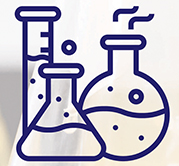Pharmaceutical has always been one of the most-lucrative industries in the world as human health is paramount! Moreover, the rising prevalence of all kinds of acute and chronic diseases is driving the demand for medicated drugs. For instance, heart diseases and cancer carry an annual mortality of 17.9 million and 9.6 million, respectively, as per the World Health Organization (WHO). In recent years, these diseases have been two of the strongest driving forces behind the growth of the global pharmaceutical sector.
Considering this factor, P&S Intelligence expects the polyethylene glycol market revenue to rise massively from $4.5 billion in 2020. This is because polyethylene glycol, often abbreviated as PEG, is a key ingredient in pharmaceutical drugs, being consumed widely as a suppository base for capsules and tablets and as a solvent. Moreover, it is widely used in the production of ointments, which are popular among people with skin issues or wounds.
Asia-Pacific (APAC) is set to continue to remain the largest polyethylene glycol market in the coming years. Even though the region’s innovative pharma sector is not as large as that of North America and Europe, APAC is the largest producer of generic medicines. Moreover, European and North American pharma, personal care, and cosmetic companies are establishing manufacturing plants here to leverage the low raw material and labor costs and less-stringent environmental regulations.
Another key reason for the high consumption of PEG in the region is APAC’s massive construction industry, which continues to grow. Due to their large populations, China and India are rapidly constructing residential, commercial, and industrial infrastructure. PEG is a vital ingredient in water-based paints, coatings, and inks, which are witnessing a rise in their consumption due to their volatile organic compound (VOC)-free nature. Hence, with the booming construction activities in the region, the demand for polyethylene glycol will continue to burgeon.
Therefore, as more people fall prey to diseases and become conscious of their appearance, PEG consumption will rise further.



















